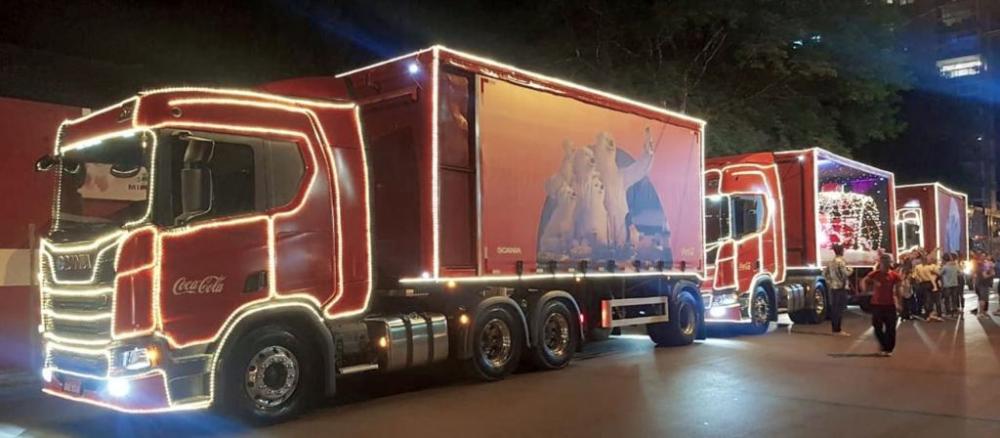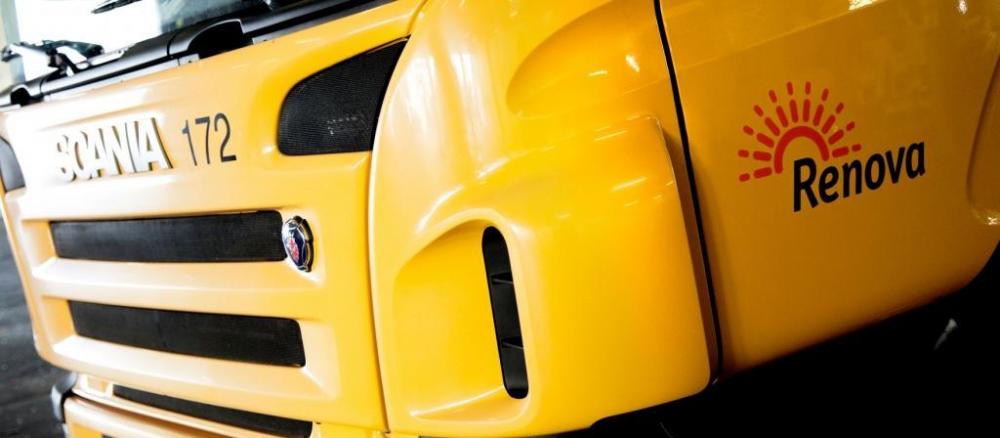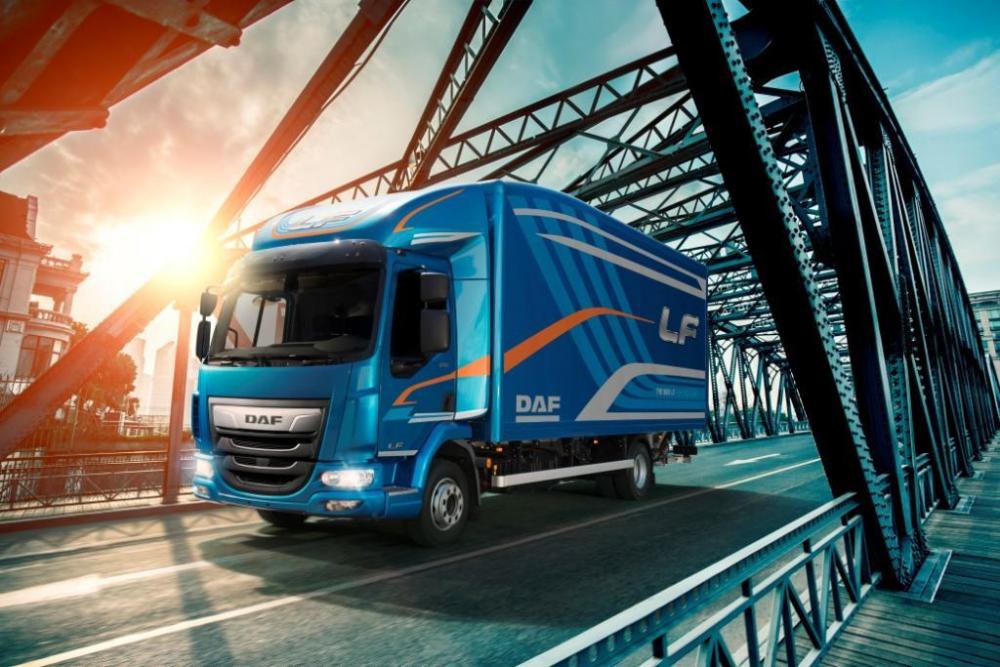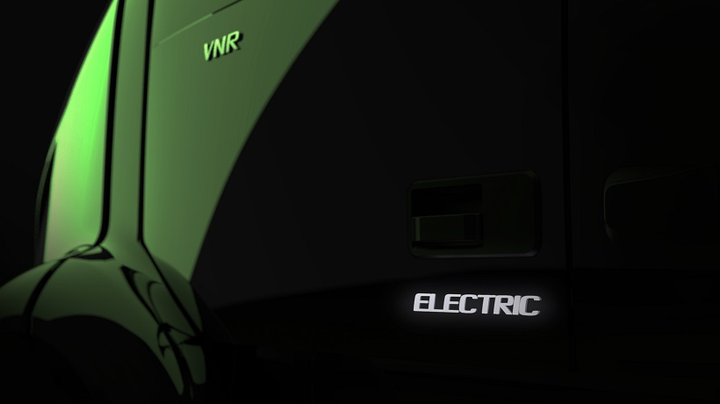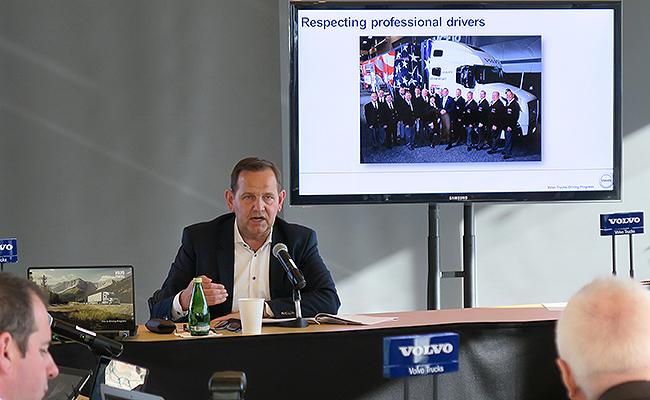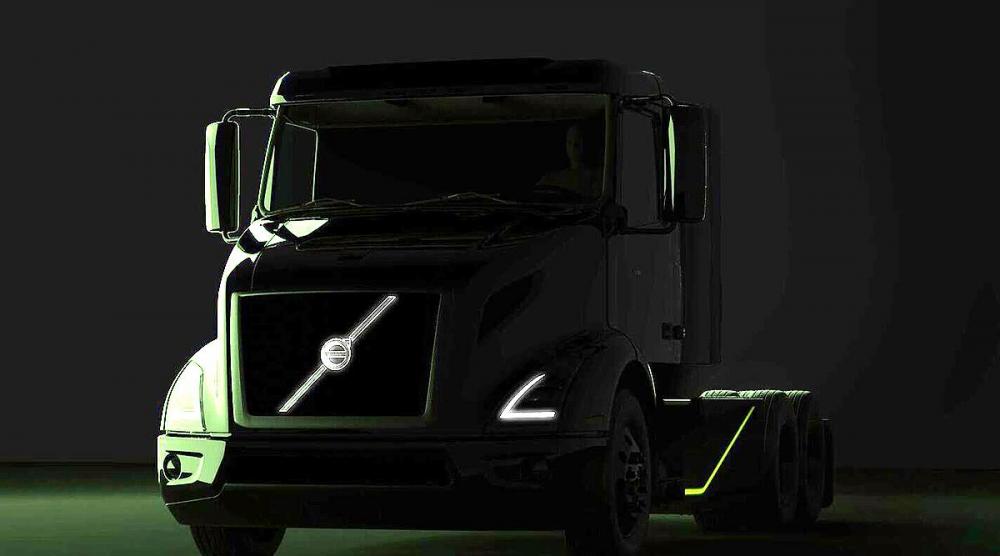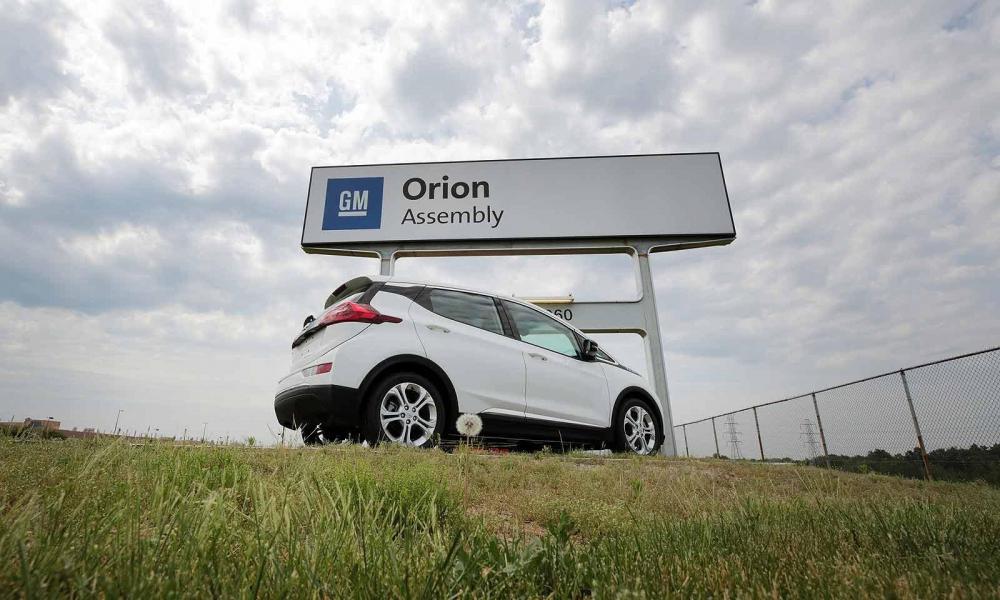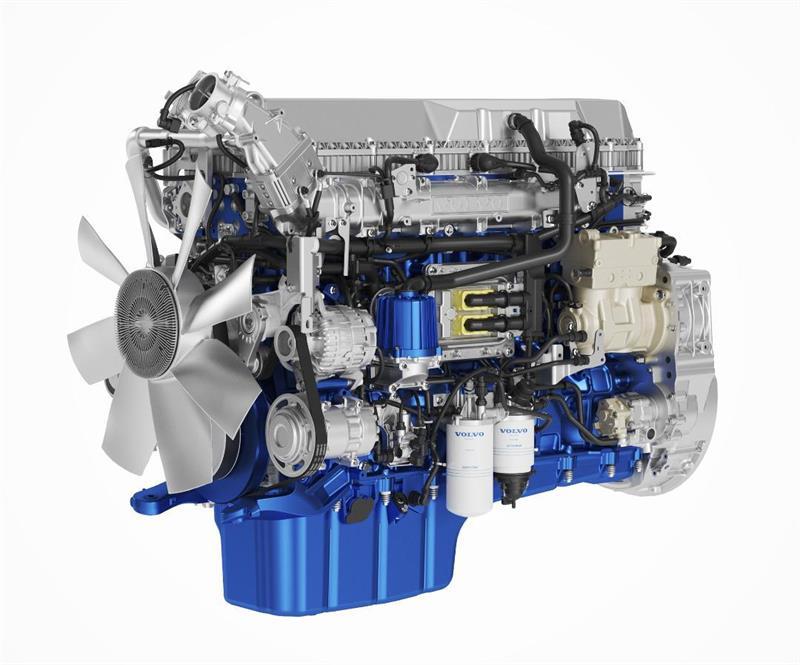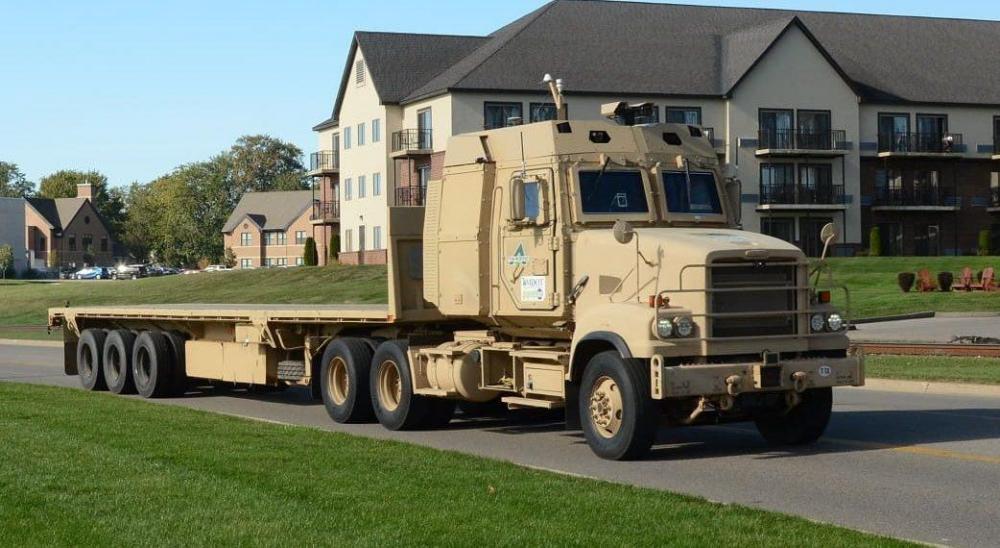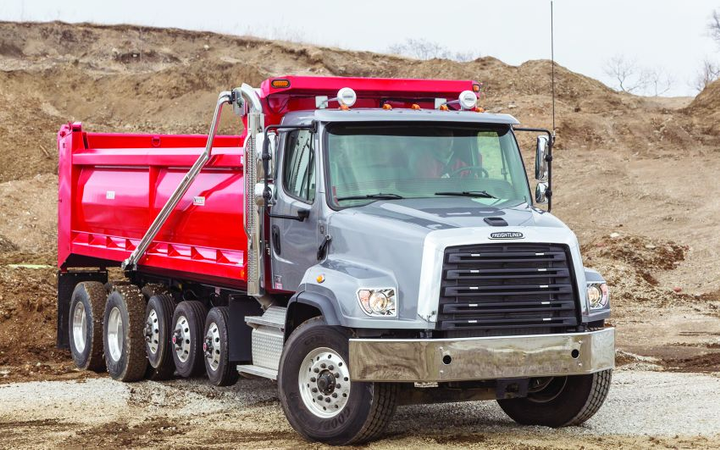
kscarbel2
Moderator-
Posts
18,855 -
Joined
-
Days Won
114
Content Type
Profiles
Forums
Gallery
Events
Blogs
BMT Wiki
Collections
Store
Everything posted by kscarbel2
-
I don't care for the ProMaster (Fiat Ducato). In the CNH Industrial Group porfolio, the Iveco Daily is my van of choice. I never see Sprinters rusting in Europe, or here for that matter. As far as repair costs, they're no more pricey to deal with than a Transit. Both are top notch vans.
-
Ford in talks with German workers about job cuts Reuters / December 10, 2018 FRANKFURT -- Ford said it had started negotiations with German worker representatives about potential job cuts at its Saarlouis plant as the automaker considers discontinuing production of its Ford C-Max and Grand C-Max compact minivans. "We can confirm that we are entering into formal negotiations with our works council with the objective of ending production of C-Max/Grand C-Max at Saarlouis," Ford said in a statement. Ford said no formal decision has yet been reached on whether to discontinue production of the minivans. But discussions will explore the consequences of such a step on the plant's workforce. "As we continue to match production to consumer demand, the consultation process also will include necessary adjustments to the workforce at Saarlouis," Ford said. Ford will continue production of the Focus at the factory. The automaker wants to reduce production from three shifts to two, which would mean the loss of 1,600 jobs, German press reports said. Saarlouis employs more than 6,190 staff, but the minivan van segment is shrinking and tougher emissions rules will require costly investments. "Keeping the vehicle compliant with all regulatory obligations would require a very high level of investment for this model," Ford said. Ford plans to restructure its money-losing European business to focus on its profit-making SUVs and commercial vehicles. It has appointed executives in Germany and UK to implement the plan, called “Sprint to 6 Reset and Redesign.” Its former head of quality, Gunnar Herrmann, will head the restructuring in Germany, while Graham Hoare will carry out the same task in the UK. Hoare was previously responsible for Ford’s test and development operations worldwide. The bulk of announcements around the restructuring are expected between now and the beginning of 2020, Ford has said. Ford and Volkswagen Group have said they are discussing an alliance for commercial vehicles. This may be broadened to include potential collaboration on autonomous driving and arrangements to make vehicles for one another, Bloomberg reported in October. Ford has not confirmed on that. Ford lost $245 million in Europe in the third quarter, compared with a loss of $53 million in the same quarter last year. This was due to weakness in Turkey and Russia, and launch-related costs for the latest Focus compact car, the company said in its third-quarter earnings call on Oct. 23. Ford has said it expects a full-year loss in 2018 in Europe as it battles headwinds such as the weak pound in the UK, its biggest European market, high raw material costs and a slump in demand for once-core models.
-
Strasbourg shooting: Gunman shouted 'Allahu Akbar' as he attacked BBC / December 11, 2018 The Strasbourg gunman yelled "Allahu Akbar" ("God is greatest" in Arabic) as he opened fire on people enjoying an evening out at a Christmas market, the Paris public prosecutor told reporters. Rémy Heitz said two people had been killed and one left brain-dead after the attack in the eastern French city on Tuesday. Twelve were wounded, six seriously. The man, named Chérif Chekatt, was known to authorities as having been radicalised in prison. The 29-year-old was armed with a gun and a knife and escaped the area in a taxi. The attacker boasted to the driver - who has spoken to police - that he had killed 10 people, and said he had been injured in a firefight with soldiers. Four people connected to the suspect had been detained overnight in Strasbourg. Hundreds of officers are currently involved in the search for the gunman. France's Deputy Interior Minister Laurent Nuñez earlier acknowledged he may no longer be in France. Interior Minister Christophe Castaner said the country had moved to a high level of alert, expanding police powers and increasing vigilance. He added that border controls had been strengthened and security at all Christmas markets would be stepped up. What happened? The attack unfolded at around 20:00 local time (19:00 GMT) on Tuesday close to Strasbourg's famed Christmas market near one of the central squares, Place Kléber, which attracts thousands of visitors at this time of year. A woman named Audrey told France's BFM TV how she came face to face with the killer after watching him shoot a man in the head. The gunman then opened fire for a second time, and another man fell to ground. Her friends began to run to safety, but Audrey was frozen to the spot. The gunman turned, and faced her - but then he too ran. "Why didn't he shoot at me? I don't know. I think I was extremely lucky. As everyone was screaming he fled." As the attacker fled, he came into contact with four soldiers. He began firing at them, and they fired back. How did he escape? He managed to reach a taxi which drove him away from the scene and dropped him in the vicinity of the police station in Neudorf, the area where he lives which sits on the border between Germany and France. When he got out the vehicle, he fired at police officers. According to police - who refer to the gunman as Chérif C - the gunman was born in Strasbourg and was already known to the security services as a possible terrorist threat. He was the subject of a "fiche S", a watchlist of people who represent a potential threat to national security. He also had 27 convictions spanning across France, Germany and Switzerland, and has spent considerable time in prison as a result. .
-
First China to Europe TIR truck secures trade flow in record time
kscarbel2 replied to kscarbel2's topic in Trucking News
How a WWII agreement allows trucks to travel from China to Europe in just 13 days Freightwaves / December 11, 2018 A couple of weeks back, a truck hailing from China drove into the depths of central Asia as it journeyed West, traversing through Kazakhstan and Russia to enter Europe through Belarus and finally unloading its freight in Poland. Though a lot of trucks have likely traced this path before, what is of particular interest is the time frame and the manner in which it was accomplished. The whole journey took just 13 days, which is nearly twice as fast as railroad transport between the two destinations, and with a door-to-door cost that is half that of air freight. But it couldn’t have happened without China’s entry into the World Road Transport Organisation (IRU) TIR system, an agreement that shaves off numerous border control checks and red-tape regulations. Transports Internationaux Routiers, abbreviated TIR, is a system that was first introduced post-World War II to facilitate trade between countries across both the Allied and Axis Power factions that were still smarting from wounds caused in the war. Trading between countries that were a part of TIR was easy as road transport operators had to only declare their data once when they were hauling goods across multiple borders. The idea behind TIR was simple - enable effortless trade transactions would induce economic growth, a development that in theory would also help sustain peace. The system was fine-tuned along the way and today, IRU provides a guarantee to the tune of 100,000 euros per truckload, which is dispensed in case of infractions on the freight. This made TIR a prudent choice for customs departments as well as for transport operators, who found this system inexpensive when considering the alternative of getting a bank guarantee for every border crossing. On account of this landmark road initiative, FreightWaves spoke with Umberto de Pretto, the Secretary General of IRU, to discuss the finer points behind this new trade flow. “TIR has gotten countries to trade and talk to each other after the Second World War, and there has been peace in Europe thanks to this. Now, we want to make sure that all the other regions benefit from this as well,” he said. Following on China’s heels, India and Pakistan have also joined the TIR initiative, thus opening up 40% of the world’s population to seamless cross-border trading. De Pretto remarked that one of the reasons for the Asian countries to take so long to join the TIR could be attributed to lack of awareness on what the system entails. “And there is also the false assumption that the TIR system - because it originated in Europe, would be a very expensive system,” he said. “Another reason is that regional efforts that were made to come up with transit systems have largely failed. So for these countries, I think it is also the frustration of not being able to put something in place that works.” With manufacturing giant China in the picture, de Pretto explained that TIR would make commodities coming out of the country cheaper, while providing leverage for Chinese businesses to trade seamlessly beyond its borders. “The moment you have access to other global markets, it’s a win for the market that’s receiving, but also a win for the market that is exporting those goods,” he said. “And it is more attractive to the consumers and you’ll have more consumption and people selling those goods will have a greater return on their investment.” De Pretto spoke about the success of the pilot run between China and Europe, explaining that the 13 days it took for the initial run could be further reduced to 11 days in the future. This is huge, as expediting freight hauling would help large businesses save millions in inventory costs. “One example is Philips, which made an assessment a few years back saying it would save $50 million globally for every one day it can reduce its stock-holding time on goods that are held up,” said de Pretto. “And that’s just one company. In economic terms, unless the goods are moving, there’s going to be somebody who’s going to be penalized.” De Pretto insisted that a railroad extension of China’s ambitious BRI initiative all the way to Europe would not have a direct bearing on the TIR-enabled market. “I don’t think there will be competition between rail and road transport, but it would be complementary. And you could move those containers by rail with the TIR convention because TIR applies to containerized movements,” he said. The IRU is actively encouraging the Chinese government to use TIR for their container movements on rail, as in the absence of a regularized environment, border hassles cannot be siphoned away. “The more we can facilitate trade, the more we will drive progress and prosperity, and in some regions, even peace. And I cite in particular the Middle East where we see quite a bit of conflict. We want to bring economic stability through road transport,” said de Pretto. “We want to make sure that the trucks bring prosperity to every village, and not just to the major hubs. We want to interconnect every village in Central Asia or Africa to the major world economies, and help them get their produce to the market.” -
Scania Group Press Release / December 10, 2018 This year, Coca-Cola’s traditional Christmas tour of Brazil will feature Scania’s new generation trucks. Heading off at the end of November, the ‘Caravana Iluminada de Natal’ has scheduled 42 city visits in 6 states. The eight red Scania trucks are all illuminated with LED lamps with Christmas theme liveries that feature Santa Claus and iconic Coca-Cola bears. “The caravan is a perfect debut for the new generation trucks in Brazil, which were launched just a few weeks ago,” says Márcio Furlan, Marketing and Communications Manager, Scania Commercial Operations Brazil. The new Scania trucks will arrive for the inauguration of the spectacular 43-metre Christmas tree in São Paulo’s Ibirapuera Park. A tradition since 10 years, the tree attracts thousands of residents and visitors. This year, it is decorated with more than 250 ornaments, including 12 one-metre holographic balls, with five full-sized bears at the base. .
-
Volvo shows off self-driving, electric truck with no cab
kscarbel2 replied to kscarbel2's topic in Trucking News
. -
Scania Group Press Release / December 10, 2018 Scania is developing a fuel cell refuse truck together with Renova, a waste handling company in western Sweden. The truck will feature a fully electrified powertrain as well as an electrified compactor. “We are highly interested in gaining more experience of fuel cells in actual customer operations,” says Project Manager Marita Nilsson, Electric Powertrain Technology at Scania. “Fuel cells constitute a promising technology in the needed decarbonisation of transports.” Refuse trucks often operate in residential areas in the early hours of the morning. With reduced emissions and noise, electric vehicles are especially attractive in these areas. Renova and other waste handling companies have previously carried out trials with electric refuse trucks but this will be the first with fuel cells. “Electrification using fuel cells fuelled by hydrogen is a highly appealing alternative for heavy commercial vehicles such as refuse trucks,” says Hans Zackrisson, Head of Development at Renova. “The trucks benefit from all the advantages of electrification while maintaining some of the best aspects of fossil-fuel operations, namely range, hours in service and payload.” Read more: Why hydrogen fuel cells could be one of the solutions for a future of sustainable transport The project is being implemented in cooperation with the Swedish Energy Agency and Stockholm’s Royal Institute of Technology and the fuel cell refuse truck is expected to be delivered in the end of 2019/beginning of 2020. Scania has previously announced that it is developing fuel cell technology in cooperation with the Norwegian food wholesaler Asko, which has opened its own production plant for sustainable hydrogen fuel. Scania is delivering four distribution fuel cell trucks with a range of 500 km to Asko. .
-
DAF Trucks Press Release / December 10, 2018 We wish you and your family the best. Enjoy the holiday season! .
-
DAF Trucks Press Release / December 10, 2018 For the second year in succession, DAF Trucks has scooped the British ‘Truck of the Year’ title for its market-leading DAF LF distribution range at the 2018 Commercial Fleet Awards. It’s already the fifth time DAF has received a top accolade in markets across Europe this year. Against stiff competition, the DAF LF emerged triumphant for its versatility, reliability, clear all-round appeal for fleet operators and DAF’s aftersales support. Judges said: “The LF retained its title as fleets again vote it their favourite truck. The LF’s versatility in urban environments is a defining feature, while its spacious cab and refined driving experience make it a firm favourite with drivers. Strong support from DAF, plus reliability and low running costs combine for an unbeatable package. DAF Trucks’ premium duty XF series – alongside the CF series – was primarily voted ‘International Truck of the Year 2018’ and subsequently received national Truck of the Year awards in Poland, Slovakia, Slovenia and Northern Ireland. “We’re naturally thrilled to win again,” said Richard Zink, Director Marketing and Sales and Member of the Board of Management of DAF Trucks, “and in the presence of such esteemed company. With the competition in this category, our LF has proved itself top truck yet again.” .
-
Navistar, UAW continue to work as contract details are negotiated
kscarbel2 replied to kscarbel2's topic in Trucking News
Navistar says it has tentative six-year deal with UAW Matt Sanctis, Springfield News-Sun / December 11, 2018 SPRINGFIELD — Navistar said today the company has a tentative six-year deal with members of the United Auto Workers, who are expected to vote Sunday on whether to ratify the contract. Company officials said the truck maker will not discuss any details of the contract before the Dec. 16 vote. Members of the UAW Local 402, which represents the majority of its workers in Springfield, could not be immediately reached for comment. “We are confident that this agreement will help us work as a team to competitively build our vehicles, run our plants and win in the market,” the company said in a statement on a website dedicated to the negotiations. This is the second time this month that members of the labor union will vote on a potential contract. The UAW voted Dec. 2 to reject a separate agreement. According to the UAW’s website, the union voted down that contract with 98 percent of the vote. -
Volvo Trucks to Introduce All-Electric Version of VNR Model
kscarbel2 replied to kscarbel2's topic in Trucking News
Volvo Reveals Electric VNR Model to Go On Sale in 2020 Heavy Duty Trucking (HDT) / December 11, 2018 Volvo Trucks has announced plans to sell an all-electric truck called the Volvo VNR Electric in North America by 2020. Volvo had already announced that they would begin testing all-electric trucks in regional haul fleets in California beginning in 2019 before selling an electric truck model 2020 but was light on the specifics. Now we know that the VNR Electric will be based on the fully-electric powertrain technology currently being used in the Volvo FE Electric, which Volvo Trucks presented in May and will begin selling in Europe in 2019. The company expects the VNR Electric to suitable for heavy urban distribution, drayage and other regional applications. “The Volvo VNR Electric leverages the versatility of the new Volvo VNR series with a proven fully-electric powertrain, and represents a strategic stride toward a comprehensive electrified transport ecosystem,” said Peter Voorhoeve, president of Volvo Trucks North America. “Cities prioritizing sustainable urban development can leverage electrified transport solutions to help improve air quality and reduce traffic noise. Cleaner, quieter, fully-electric commercial transport also creates opportunities for expanded morning and late-night operations, helping cut traffic congestion during peak hours.” The Volvo VNR Electric came out of the Low Impact Green Heavy Transport Solutions partnership between Volvo Group and California’s South Coast Air Quality Management District as well as transportation and electrical charging infrastructure members. The California Air Resources Board allotted $44.8 million for the Volvo LIGHTS project, which is part of an effort to reduce greenhouse gas emissions in California. . -
Volvo Trucks to Introduce All-Electric Version of VNR Model
kscarbel2 replied to kscarbel2's topic in Trucking News
Volvo plans VNR Electric regional tractor by 2020 Fleet Owner / December 11, 2018 WASHINGTON, D.C. — Volvo Trucks’ first North American all-electric truck will be a VNR regional-haul tractor, the company announced Tuesday. The trucks will debut in California as demonstration units next year, operating in distribution, regional-haul and drayage operations. The VNR Electric will go on sale in North America in 2020. “We are proud to announce the Volvo VNR Electric, designed to support cities focused on sustainable urban development and fleets operating in a range of regional-haul and distribution operations,” said Peter Voorhoeve, president of Volvo Trucks North America, during a meeting here with the media. “The Volvo VNR Electric leverages the versatility of the new Volvo VNR series with a proven fully-electric powertrain, and represents a strategic stride toward a comprehensive electrified transport ecosystem,” he said. “Cities prioritizing sustainable urban development can leverage electrified transport solutions to help improve air quality and reduce traffic noise. Cleaner, quieter, fully-electric commercial transport also creates opportunities for expanded morning and late-night operations, helping cut traffic congestion during peak hours.” The Volvo VNR Electric demonstration units will be based on the propulsion and energy storage technology currently being used in the Volvo FE Electric, according to the company, and builds on the Volvo Group’s accumulated expertise in electrified transport solutions. Sister company Volvo Buses has sold more than 4,000 electrified buses since 2010. “The Volvo VNR is ideal for applications like heavy urban distribution, drayage and other regional applications where electric trucks will first have the greatest impact,” said Johan Agebrand, Volvo Trucks North America director of product marketing. “The VNR series has received tremendous industry acceptance since its April 2017 introduction, and the addition of an all-electric powertrain provides even greater opportunities to expand its footprint in the regional-haul market.” Introduction of the Volvo VNR Electric models are part of a partnership, known as LIGHTS (Low Impact Green Heavy Transport Solutions) between the Volvo Group, California’s South Coast Air Quality Management District (SCAQMD), and industry leaders in transportation and electrical charging infrastructure. “The LIGHTS project is a truly unique opportunity to showcase a holistic approach to electrification of the freight transport industry as we handle ongoing challenges including electricity generation and battery optimization,” said Voorhoeve. “We appreciate that the California Air Resources Board (CARB) and the SCAQMD have recognized our leadership and trusted us to oversee this project that will ultimately result in the commercialization of fully-electric heavy-duty trucks. In addition to introducing the VNR Electric, through LIGHTS we will bring a complete sustainable freight solution with end-to-end electrification coordination with our many partners.” "Electric trucks bring many unknowns and our holistic focus through the LIGHTS project will help our fleet partners transition securely and smoothly based on their individual needs regarding driving cycles, load capacity, uptime, range and other parameters,” said Agebrand. “Within the project we’ll look at everything from route analysis and battery optimization to servicing and financing. We always aim to offer high uptime and productivity.” CARB has preliminarily awarded $44.8 million to SCAQMD for the Volvo LIGHTS project. The Volvo LIGHTS project will involve 16 partners, and will transform freight operations at the facilities of two of the United States’ top trucking fleets. Volvo LIGHTS is part of California Climate Investments, a statewide initiative that puts billions of Cap-and-Trade dollars to work reducing greenhouse gas emissions, strengthening the economy and improving public health and the environment – particularly in disadvantaged communities. -
Transport Topics / December 11, 2018 WASHINGTON — Volvo Trucks will bring electric-powered commercial trucks to North America next year by introducing a battery-electric version of its VNR regional haul model. The truck manufacturer said it will first deploy the zero-emissions VNR Electric tractor in 2019 in demonstrations in California and will begin selling the vehicle across North America in 2020. Volvo made the announcement here Dec. 11 during a roundtable discussion with industry press hosted by Peter Voorhoeve, the new president of Volvo Trucks North America. “We are proud to announce the Volvo VNR Electric, designed to support cities focused on sustainable urban development and fleets operating in a range of regional-haul and distribution operations,” said Voorhoeve, who began his current role Sept. 1. Volvo did not reveal the truck’s final design or the vehicle’s range and weight, but said it will be based on the battery-electric powertrain used in its FE Electric cabover model for the European market. The truck maker plans to deploy 23 of its VNR Electric models in southern California through a project dubbed Volvo LIGHTS, or Low Impact Green Heavy Transport Solutions. The project, aimed at reducing greenhouse-gas emissions, is a partnership between Volvo Group and California’s South Coast Air Quality Management District, as well as other companies involved in transportation and electrical charging infrastructure. The California Air Resources Board preliminarily awarded $44.8 million to SCAQMD for the initiative. Volvo LIGHTS will transform freight operations at facilities of NFI Industries and Dependable Highway Express, Volvo said. Voorhoeve described the project as an “end-to-end solution” addressing not just the vehicle, but the charging infrastructure and other concerns to make electrification work in real freight operations. “Electric trucks bring many unknowns and our holistic focus through the LIGHTS project will help our fleet partners transition securely and smoothly based on their individual needs regarding driving cycles, load capacity, uptime, range and other parameters,” said Johan Agebrand, VTNA’s director of product marketing. On the other side of the Atlantic, Volvo first unveiled the FE Electric and another all-electric model, the FL Electric, earlier this year, and announced plans to start selling those trucks in Europe in 2019. .
-
GM pressed by 2 Senators to build all EVs for U.S. stateside David Shepardson, Reuters / December 11, 2018 WASHINGTON -- Two U.S. senators from Ohio on Tuesday asked General Motors CEO Mary Barra to commit to building all future electric vehicles for U.S. buyers at home and to provide more details of plans to cut back on car production in North America. The letter from Republican Senator Rob Portman and Democrat Sherrod Brown demanding answers to questions by Dec. 21 is the latest effort by Congress and the White House to press GM into reversing its decision to halt production at four U.S. plants and cut thousands of jobs. The senators also asked if GM will produce additional EVs or shift to building EV SUVs and crossovers. The letter asks GM to disclose how many people at its suppliers in Ohio will lose their jobs if GM closes its Lordstown Assembly plant as well as how much it will cost to close the plant. GM plans to discontinue U.S. production of the Chevrolet Cruze, which is made in Lordstown. GM is unlikely to build a new vehicle at Lordstown once it halts Cruze production in March, company officials say, and GM executives have told Congress it would take two years or longer to develop and prepare the plant to assemble a new vehicle. Barra said last week she would keep an "open mind" about the plant's future. The final decision will be made during contract talks in 2019 with the United Auto Workers union, she added. On Friday, four members of the U.S. House wrote President Donald Trump inviting him to join them in visits to the closing plants and urging him to intervene "in every manner possible to seek both short and long term remedies for these workers." GM, which is holding a two-day board meeting this week, did not immediately comment on the letter. The company cut hundreds of contract product development jobs in Michigan last week as part of its plan to cut around 8,000 salaried positions in North America by early 2019. GM said in October 2017 it would launch at least 20 new all-electric vehicles by 2023, but has not said where they will be produced. GM builds the EV Chevrolet Bolt at a plant in Michigan, but plans to end production next year of its plug-in hybrid Chevrolet Volt in Detroit. GM builds the Buick Envision in China and exports it to the United States. The company asked the Trump administration in July to exempt the vehicle from a new 25 percent U.S. tariff. The White House favors ending the $7,500 EV tax credit. GM and Tesla Inc have been lobbying Congress to extend the credit to cover additional vehicles. .
-
Transport Engineer / December 7, 2018 Volvo Trucks is upgrading its D11 and D13 diesel engines for its FH, FM and FMX models, ahead of the introduction of the Euro VI Step D regulation. Claes Nilsson, president of Volvo Trucks, says the manufacturer has also used this opportunity to deliver new ways of reducing fuel consumption. “A combination of small improvements enables significant cost savings for our customers without compromising performance or productivity,” Nilsson says. Euro VI Step D focuses on ensuring that vehicles conform to the emissions standards in real-world operation – Volvo is achieving this with new engine software and improved coating in the exhaust after-treatment system. The upgraded D13 diesel engine (pictured) also uses a new VDS-5 low viscous oil type and new piston oil scraper rings to reduce fuel consumption and internal friction. Additionally, the 494bhp engine saves extra fuel by having the same higher compression ratio as the 454 and 415bhp versions. The upgraded engines are available to order from the end of this month. Volvo is also improving its I-See system with a new gear selection strategy and selective coasting, which enables a more efficient use of I-Roll, the freewheel function. “These updates will support our customers in staying on top of the new emission regulation while improving fuel efficiency for our Volvo FH, FM and FMX trucks,” says Nilsson. .
-
Defense Blog / December 10, 2018 The U.S. Army announced a plan to receive first autonomous vehicles for two transportation battalions by summer 2019, according to the article published in the January – March 2019 issue of Army AL&T magazine. A two U.S. Army’s transportation battalions will receive first autonomous leader-follower systems as part of advanced robotics programme. “The Ground Vehicle Systems Center’s work with the Robotic Operating System – Military (ROS-M) covers a spectrum of autonomy and robotics, including small explosive ordnance disposal-assist robots that have been fielded as part of the advanced leader-follower capabilities that Soldiers in two transportation battalions will see by summer 2019,” said the article . The ROS-M uses an open-source approach and a widely accepted software framework with common government and industry software to develop military robotics and autonomous systems. The open-source approach allows developers to create software modules for different applications and enables integrators to build modular systems using the best software modules available for military autonomous systems. Robotics helps Soldiers in two ways: It eliminates the need for Soldiers to conduct mundane, dangerous or repetitive tasks that can be automated, and it increases the standoff distance between Soldiers and a threat, which can greatly enhance safety. Additionally, automation can increase logistics on convoy missions. For example, a pair of Soldiers can operate a convoy that normally requires two Soldiers in each vehicle, freeing the additional Soldiers to conduct other missions, such as providing security for the convoy. Leader-Follower is still a limited form of autonomy — but those limits are more about Army tactics and culture than the technology itself. The U.S. Army is expected that autonomous systems and robots will take their place on the battlefields of the near future. They will be used in the more prosaic task of delivering ammunition and other supplies, freeing up more personnel to concentrate on warfighting tasks. The Army is ready for unmanned vehicles but not yet for a completely unmanned convoy, which is slated for a later phase of the Automated Ground Resupply program, albeit perhaps as early as 2022. .
-
Volvo Trucks North America (VTNA) / December 10, 2018 How do you make one of the most maneuverable trucks on the road even more nimble? Faster shifting, even better visibility and the best wheel cuts on the road — plus new seats and a revolutionary steering wheel. .
-
Heavy Duty Trucking (HDT) / December 10, 2018 Cummins has announced that the company’s lightest engine for Class 8 trucks, the Cummins X12, is now available for Freightliner’s 114SD chassis. Now available for order at Freightliner, the X12 engine weighs only 2,050 pounds and boasts up to 500 horsepower and 1,700 lbs.-ft. of torque. It has been optimized for the Freightliner 114SD chassis for vocational applications like concrete mixers and dump trucks. “Cummins is excited about the positive impact our X12 will have in weight-sensitive markets,” said Brett Merritt, vice president − Cummins on-highway engine business. “We believe that the Cummins X12 in Freightliner’s 114SD truck will be an exceptional option for vocational customers.” With its lighter weight, the Cummins X12 provides fleets with an option that can optimize productivity by reducing the unloaded weight of a vehicle while still providing suitable power for the job. Less weight can also mean more upfitting options, a benefit to both end customers and truck equipment manufacturer partners. The X12 also has a low-friction design for improved fuel economy and extended maintenance intervals similar to the Cummins X15 engine, as well as the company’s commitment to high mileage use and uptime. “By adding the Cummins X12 to our engine portfolio, we give the already versatile 114SD yet another option, showing our commitment to providing customers a choice,” said Kelly Gedert, director of product marketing for Freightliner Trucks and Detroit Components. .
-
Trailer-Body Builders / December 6, 2018 The Freightliner Custom Chassis Corporation (FCCC) product lineup features three lines of Class 4-8 chassis, including a front engine cowl/cab for S2G commercial trucks and front engine rail chassis for walk-in vans. The MT Gasoline, MT 45 Series and MT 55 Series chassis provide walk-in van options. FCCC said the Freightliner S2G custom chassis available for commercial propane truck conversions provides the only fully integrated, factory-installed fuel system with aftermarket support. The company uses hydraulic disc brakes from Walther EMC. The 4-millimeter-by-71-mm disc brakes feature a large pad volume for longer replacement intervals, pistons on each side of the rotor that apply force evenly, and linings without a clamp load to minimize drag. The Walther EMC brakes also feature a corrosion-resistant anti-lock braking system with a steel tone ring that resists heat breakdown. With a “no-flake” microstructure, the ABS teeth maintain integrity in corrosive environments and resist corrosion-induced ABS signal deterioration. A Detroit DD5 engine provides up to 11.9 mpg in parcel delivery applications, with an additional 12% fuel economy improvement when used together with Allison Transmission’s FuelSense 2.0 The engine also boasts efficient regeneration of the diesel particulate filter, optional integrated braking with up to 220 bhp, and the Detroit Connect Virtual Technician remote diagnostic system. Freightliner Custom Chassis last year introduced a line of non-diesel proprietary engines* developed for its chassis, and supported and serviced through its nationwide Freightliner dealer network. For the 2019 model year, the DriveForce 6.0L* gets a new engine control module with one common diagnostic connector, support for ADAS features that require engine de-torqueing and increased flexibility. The DriveForce 8.0L engine received several upgrades to address issues with rocker arms, PCV baffle, intake leakage, PTO filtering and reverse torque. Other enhancements include updates to the OptiView digital instrument cluster that provides situation-based information, minimizing distraction and optimizing efficiency, ProTek telematics and 24/7 Direct app. ---------------------------------------------------------------------------------------------------------------- * FCCC Unveils DriveForce Gasoline Engine in Louisville RV Business / November 28, 2017 Freightliner Custom Chassis Corp. (FCCC) is debuting DriveForce, its new line of proprietary non-diesel engines for the RV market at this week’s National RV Trade Show being held this week in Louisville, Ky. Developed exclusively for FCCC products, DriveForce will offer more options for dealers, OEMs and end-users, all while being supported and maintained by Freightliner’s nationwide dealer network and 24/7 direct customer service. According to a press release, the first engine in the DriveForce lineup showcasing in Louisville is the 6.0L gasoline engine. Offering 308hp and 367 lb.-ft. of torque, the first DriveForce engine will power FCCC’s MC chassis and offer a new high-quality, luxury chassis option in the 16,000-19,500 pound GVW product range. In addition, the 6.0L gasoline DriveForce engine will offer end-users increased fuel efficiency of up to 15% compared with current gasoline chassis available on the market. “We are incredibly excited to share DriveForce with the industry – and to continue to expand the number of world-class chassis products available to our OEM and dealer partners,” explained Gordie Taylor, RV product manager for FCCC. “We know from our extensive market and consumer research that DriveForce meets a growing need and, combined with the MC series, will offer an engine/chassis product unparalleled in its quality, performance and power to a growing segment of the market.” FCCC’s MC line features high-quality, world-class components intended to reduce maintenance intervals, increase chassis life and enhance the overall ride and handling experience. The MC’s premium WEMC Walther quad-piston hydraulic disc brakes offer commercial-grade braking power and provide five times the brake life compared with standard gasoline-chassis products. In addition, its one-piece frame rail provides superior durability compared to two-piece products currently available while a standard Allison transmission means five times less maintenance costs compared with current gasoline chassis on the RV market. SACHS shocks also help provide an overall premium driving experience. FCCC expects to have pilot units ready for development by early 2019.
-
Elon Musk Says Tesla Might Be Interested in Buying GM Plants Transport Topics / December 10, 2018 Elon Musk is sizing up General Motors' recently idled plants. The tech billionaire said in an interview with CBS’ “60 Minutes” that it’s “possible that [Tesla] would be open” to taking over automakers’ old plants, including factories GM recently has slated for closure. GM announced late November that it would idle assembly plants in Detroit-Hamtramck, Lordstown in Ohio and Oshawa in Ontario by the end of 2019. .
-
- 1 reply
-
- 1
-

-
I'd have to see the knob and HVAC assembly to be clear.
-
Navistar downgraded today to Sell from Neutral Goldman Sachs analyst Jerry Revich downgraded Navistar International to Sell and lowered his price target for the shares to $23 from $43. The analyst recommends an increasingly selective approach for the Americas Machinery, Engineering & Construction sector in 2019 amid growing signs of oversupply.
-
$140,000 new truck purchase
kscarbel2 replied to mojazzn's topic in Antique and Classic Mack Trucks General Discussion
A unique case, the C15 was available on CAT trucks in Australia because the country is Euro 5. But they are heading to Euro 6 and indeed many truckmakers are now selling Euro 6 product there anyway, including Scania. China is Euro 6 in the major cities and heading for nationwide soon. They're using Euro 6 tech to reach Euro 5, so the nationwide jump to Euro 6 will be a blink. The EU of course is Euro 6, where the trucks generally speaking have no issues. Remember EPA2007 and all the EGR issues? American Macks had windshield washer reservoirs melting under the hood. EPA2007 was the equivalent of Euro 5. EU operators had a choice of SCR or EGR. The Scania and MAN EGR trucks had no issues. -
In addition to the Scania-Vabis tag, is there a Mack tag? Being a DS, it should be turbocharged.....I'd assume it is a ENDTF475, rated at 216 horsepower. With the information off the Scania-Vabis tag, Scania North America could be of assistance. Are you related to former Mack Trucks Vice President Rick Kilgore?
BigMackTrucks.com
BigMackTrucks.com is a support forum for antique, classic and modern Mack Trucks! The forum is owned and maintained by Watt's Truck Center, Inc. an independent, full service Mack dealer. The forums are not affiliated with Mack Trucks, Inc.
Our Vendors and Advertisers
Thank you for your support!


